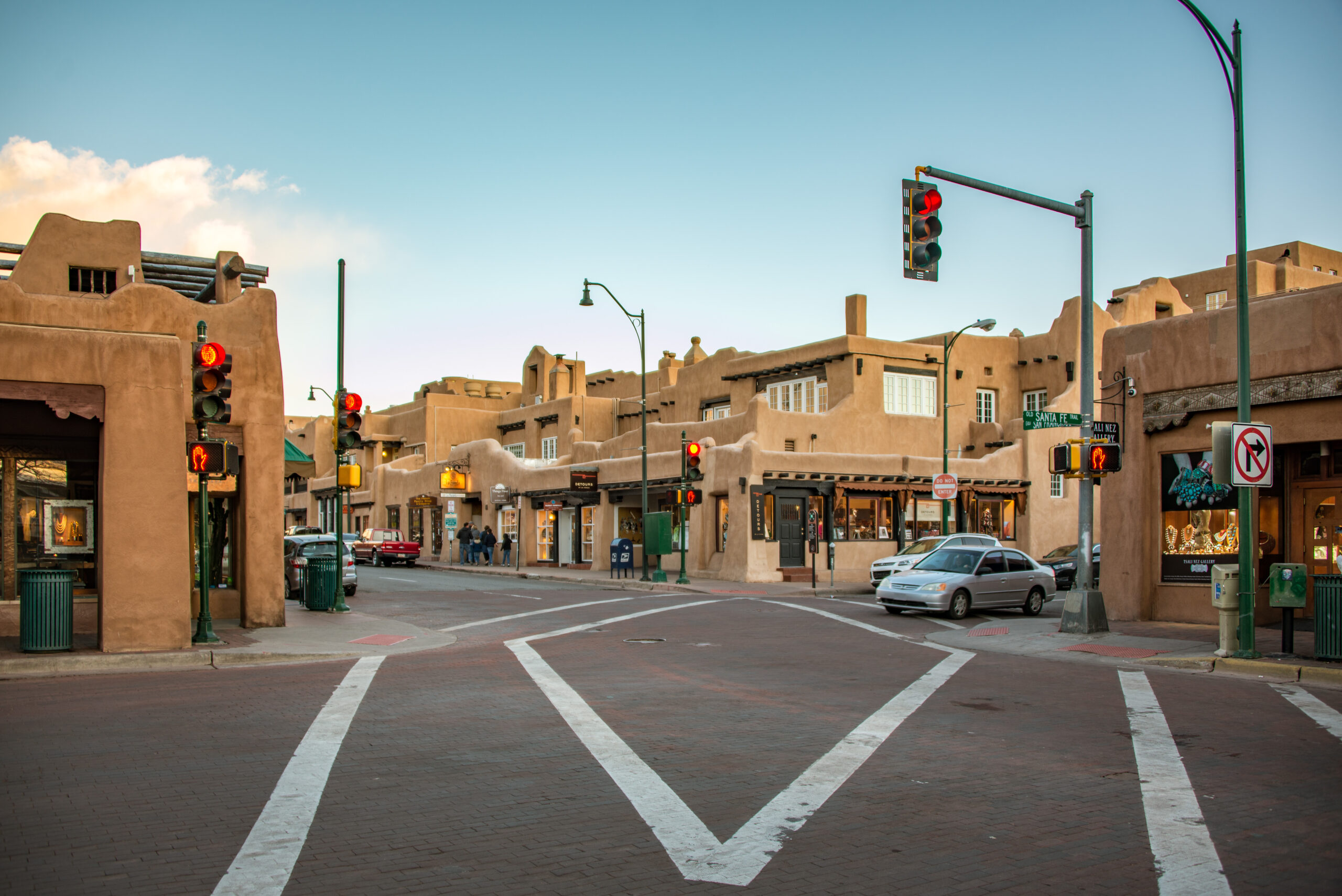
15 Facts about Latino Well-Being in New Mexico
This data brief, produced by the UCLA Latino Policy and Politics Institute research team, provides detailed information on New Mexico’s Latino population using the 2015-19 American Community Survey data.

1. Latinos are the largest racial and ethnic group in New Mexico at almost half of the population (Figure 1), compared to 18% of the national share of Latinos. New Mexico has the highest share of Latinos among all U.S. continental states and the District of Columbia, followed by Texas and California. Since 2000, the Latino population in New Mexico has grown 35%, the fastest of all major racial and ethnic groups.
Figure 1. New Mexico Population by Race and Ethnicity, 2019
Source: LPPI analysis of 2015-2019 American Community Survey public use microdata.
Note: AAPI refers Asian American and Pacific Islander Population.
2. Latinos in New Mexico are younger than most racial and ethnic groups. With a median age of 32, the Latino population is younger than most major racial groups and is significantly younger than the state median (37). Close to 20% of Latinos in New Mexico are children ages 0 to 10, compared with 14% of New Mexico’s population.
3. Most Latinos in New Mexico are Mexican (64%), a rate slightly higher than the national average of 62%. Latinos of other descent make up the second largest Latino group in New Mexico at 33%, indicating the deep Latino roots in the state. Since 2000, Venezuelans have grown the fastest among Latino groups in New Mexico.

4. New Mexico’s Latinos have lower education levels than the New Mexico average, but higher than Latinos nationally. Twenty-three percent of Latinos in New Mexico did not complete high school, a rate lower than Latinos nationally (31%) but much higher than the state overall (15%). Among Latino sub-groups, twenty-nine percent of Mexicans didn’t finish high school, versus 10% of Puerto Ricans and 3% of South Americans.
5. Latinas in New Mexico have higher educational attainment than Latino men, but both groups have lower attainment of postsecondary degrees than every other major demographic group except for the Native Americans (Figure 2). Twenty-five percent of Latinas completed an associate degree or higher, compared to 21% of Latino men.
Figure 2. Population with an Associate’s Degree or Higher by Race, Ethnicity, and Gender, 2019
Source: LPPI analysis of 2015-2019 American Community Survey public use microdata.

6. Latino men have the second highest labor force participation rate in New Mexico among major racial groups (Figure 3). However, Latino men in New Mexico are slightly less likely to be in the labor force than Latino men nationally.
Figure 3. Labor Force Participation Rates for Men by Race and Ethnicity, 2019
Source: LPPI analysis of 2015-2019 American Community Survey public use microdata.
Note: Data are for the civilian non-institutionalized population.
7. Latina women have the third-highest labor force participation rate among women, after Black women and APPI women (Figure 4). Similar to the trends for men, Latinas in New Mexico are less likely to participate in the workforce than Latinas nationally.
Figure 4. Labor Force Participation Rates for Women by Race and Ethnicity, 2019
Source: LPPI analysis of 2015-2019 American Community Survey public use microdata.
Note: Data are for the civilian non-institutionalized population.
8. Almost half of Latinos in New Mexico live in poverty or low-income conditions, the second highest among all race and ethnicity groups, after Native Americans. New Mexico Latinos are more likely to live below the poverty line versus U.S. Latinos (24% vs. 22%) but are less likely to live in low-income conditions (24% vs. 26%).

9. Latinos have the second-highest homeownership rate (65%) among major racial groups: only white New Mexicans are slightly more likely to own their home (72%). Latinos in New Mexico are a lot more likely to own their homes than Latinos nationally (47%).
10. Latinos in New Mexico have the second-lowest home values in New Mexico among major racial groups, higher than the Native Americans (Figure 5). In 2019, Latinos’ median home value was $143,000, $25,000 lower than the state median. Among Latino descent groups, South Americans own homes with the highest median value ($200,000).
Figure 5. Median Home Values in New Mexico by Race and Ethnicity, 2019
Source: LPPI analysis of 2015-2019 American Community Survey public use microdata.
Note: Data reflect race and ethnicity of head of household.
11. More than half (53%) of Latinos in New Mexico are housing cost-burdened, meaning they spend more than 30% of their incomes on housing costs, a rate slightly higher than the New Mexico average (50%) but slightly lower than Latinos nationally (55%).
12. Latinos, especially Latino children, are the most likely to live in overcrowded households. Five percent of all Latinos and 21% of Latino children in New Mexico live in overcrowded homes, compared to 14% of all Native Americans and 19% of Native American children.

13. Latinos are the second most likely to be uninsured in New Mexico (Figure 5), after Native Americans. Twelve percent of Latinos are uninsured, a rate slightly higher than New Mexico’s average (10%) and lower than Latinos nationally (18%). Among Latino origin groups, 30% of Guatemalans are uninsured, the most of any group, followed by Salvadorans (20%). Noncitizen Latinos are the most vulnerable, with close to half (49%) lacking health insurance.
Figure 6. New Mexico Uninsured Rate by Race and Ethnicity, 2019
Source: LPPI analysis of 2015-2019 American Community Survey public use microdata.
14. Five percent of Latino children in New Mexico are uninsured, on par with the state average (5%) and lower than the national level for Latino children (8%). Among different Latino groups, 6% of Mexican and South American children are uninsured, followed by Puerto Rican (4 %) and Cuban (3%) children.
15. Forty percent of Latinos in New Mexico are covered by Medicaid, while 64% of Latino children are covered by Medicaid. Medicaid covers 33% of all New Mexicans and 57% of children.
Featured photo courtesy of Kent Kanouse on Flickr.

















